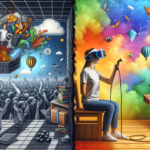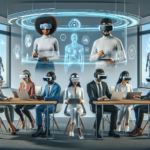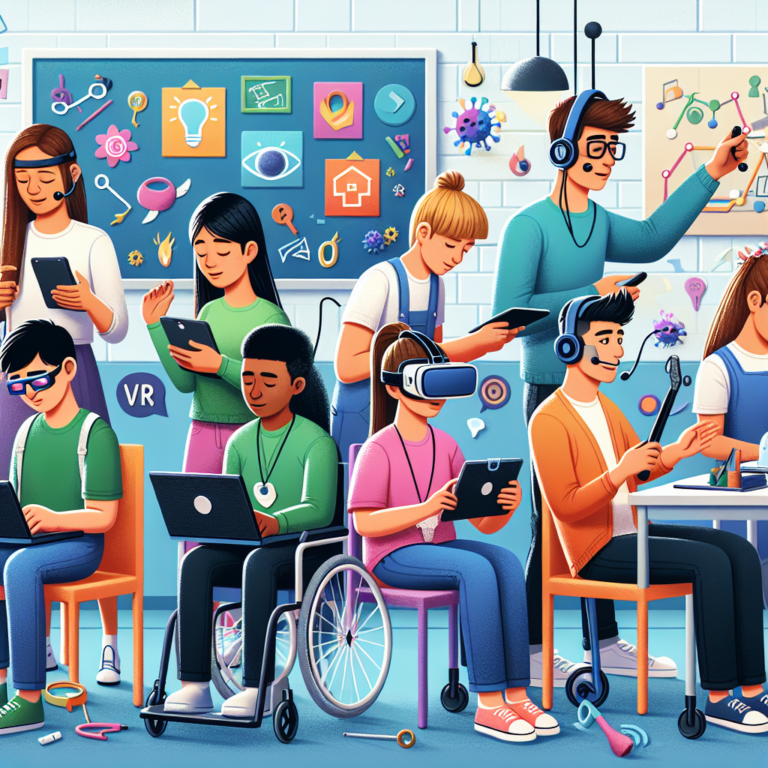XR Accessibility: The Power of XR in Creating Inclusive Learning Experiences for Students with Disabilities
The Evolution of Educational Technology
As technology continues to advance, so does its potential to revolutionize education. One of the most exciting innovations in this field is Extended Reality (XR), an umbrella term encompassing Virtual Reality (VR), Augmented Reality (AR), and Mixed Reality (MR). XR has emerged as a game-changer in fostering inclusive learning environments, particularly for students with disabilities. Let’s delve into how XR is making education accessible and engaging for everyone! 🌍✨
XR Accessibility: Understanding XR and Its Unique Advantages
XR technologies are designed to create immersive experiences that transport users into interactive 3D environments. This capability allows learners to engage with content in ways that traditional methods cannot offer. Here are some of the remarkable benefits of XR in educational settings:
- Personalized Learning: XR can adapt to various learning styles and paces, catering specifically to individual needs.
- Engagement: The immersive nature of XR captivates students’ attention, making learning exciting and enjoyable.
- Safe Exploration: Students can explore environments that might be difficult or impossible to access in real life, providing them a unique learning opportunity.
- Multi-sensory Experience: XR appeals to multiple senses, enhancing retention and understanding of complex concepts.
X-Rays into the Needs of Students With Disabilities
Understanding the challenges faced by students with disabilities is critical for creating inclusive environments. Learning disabilities, physical impairments, and sensory challenges can hinder academic performance and engagement.
XR Accessibility: Breaking Down Barriers
- For students with visual impairments, XR environments can be tailored using audio descriptions and haptic feedback, enabling them to navigate and interact with virtual worlds effectively. Similarly, for those with hearing impairments, incorporating visual cues and subtitles ensures they can fully engage with the content.
- When addressing physical disabilities, XR tools offer solutions by simulating mobility, allowing students to participate in activities that might otherwise be inaccessible. Moreover, for students with cognitive disabilities, customizable XR experiences can break down complex concepts, making the material more understandable and accessible.
XR Accessibility: Innovative Use Cases of XR in Education
To understand the transformative power of XR, let’s explore some real-world applications that illustrate its impact on inclusive learning.
Virtual Field Trips
Imagine students with mobility challenges being able to explore the pyramids of Egypt or the depths of the ocean without ever leaving the classroom! 📸 With XR, virtual field trips can create sharing experiences that broaden horizons, fostering a sense of adventure in every student.
Interactive Learning Modules
XR can transform traditional lessons into interactive experiences. For example, science classes can leverage AR to visualize complex concepts like the human body or ecosystems. This not only simplifies understanding but also engages students in hands-on learning, making it easier for them to connect with the content.
XR Accessibility: Social Skills Development
For students on the autism spectrum, XR can simulate social situations in a controlled environment, allowing them to practice interactions without real-world pressure. By experiencing diverse scenarios, these students can build their confidence and social skills effectively! 🎭
Best Practices for Implementing XR in Inclusive Education
Integrating XR into learning experiences requires careful planning and execution to ensure that it meets the needs of all students adequately. Here are some best practices to keep in mind:
- Conduct Needs Assessments: Before implementation, evaluate the specific needs of students with disabilities in the classroom.
- Choose the Right XR Tools: Select XR technology that fits well with different learners’ requirements and aligns with the curriculum.
- Encourage Collaboration: Involve students, educators, and disability specialists in the design process to create meaningful experiences.
- Provide Training: Ensure that both students and educators have proper training on using XR tools for maximum benefit.
- Assess and Adapt: Regularly collect feedback and ensure that XR experiences are continually improved based on student needs.
Challenges and Considerations
While XR holds immense potential for creating inclusive learning experiences, several challenges must be acknowledged:
Cost of Implementation
The initial investment for XR technology can be high, which may deter schools from making these advancements. However, considering the long-term benefits and potential for improved student outcomes, it may be worthwhile.
Accessibility Issues
Not all XR solutions are designed with accessibility in mind. Developers must prioritize inclusivity in their designs to ensure that every student can benefit from these technologies.
Training Requirements
Effective utilization of XR technology often requires educators to undergo significant training. It’s crucial to ensure that teachers are equipped to facilitate these experiences and fully understand their potential.
Looking Ahead: The Future of XR in Education
As technology continues to evolve, the future of XR in education is promising. Emerging developments in AI and machine learning will likely enhance personalized learning experiences, providing even more tailored support for students with disabilities. 🧠💡
To foster an inclusive educational environment, schools should invest in and prioritize the integration of XR technologies. By breaking down barriers and enhancing engagement, we can create a more equitable future for students of all abilities. Let’s embrace the transformative potential of XR and pave the way for truly inclusive learning experiences! 🌈




0 Comments